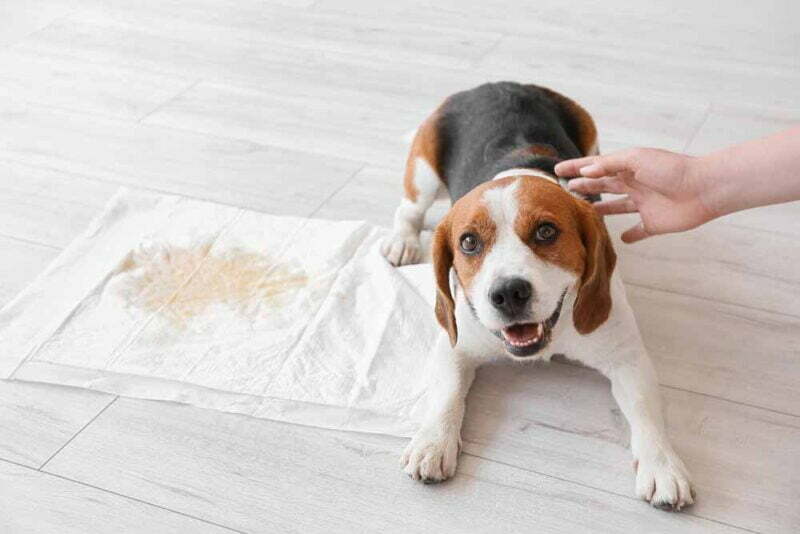Bringing home a new beagle puppy is an exciting time, but one of the essential tasks you’ll face as a new owner is potty training. Establishing good potty habits early on is crucial for a harmonious and clean living environment. In this comprehensive guide, we’ll provide you with expert tips and techniques to successfully potty train your beagle. From understanding their natural instincts to implementing effective training methods, you’ll be equipped with the knowledge to make the process smoother and more efficient.
Understanding Beagle Potty Training
Before diving into the training techniques, it’s important to understand a few key aspects of beagle potty training:
- Instinctual Behavior: Beagles are generally clean dogs by nature, which works to your advantage during potty training. They have a natural instinct to eliminate away from their sleeping and eating areas. Understanding this instinct will help you guide your beagle towards appropriate potty habits.
- Consistency and Positive Reinforcement: Consistency is the key to successful potty training. Establish a routine for feeding, playtime, and bathroom breaks. Positive reinforcement, such as treats and praise, will reinforce desired behavior and motivate your beagle to continue their good habits.
Effective Techniques for Beagle Potty Training
Now, let’s explore some effective techniques to potty train your beagle:
# 1. Establish a Designated Potty Area
Choose a specific spot in your yard where you want your beagle to eliminate. Take them to this area consistently and use a cue word or phrase, such as “go potty,” to associate it with the desired behavior. Be patient and reward them with treats and praise when they eliminate in the designated spot.
# 2. Regular Bathroom Breaks
Take your beagle outside for bathroom breaks at regular intervals throughout the day, especially after meals, playtime, and naps. Beagles have smaller bladders, so frequent breaks are important. Use a leash to keep them focused on the task at hand.
# 3. Crate Training
Crate training can be an effective tool for potty training. Dogs naturally avoid soiling their sleeping areas, so use a properly sized crate to create a den-like space for your beagle. Gradually increase the time they spend in the crate and let them out for bathroom breaks immediately afterward.
# 4. Supervision and Preventive Measures
Keep a close eye on your beagle, especially during the early stages of potty training. Supervision helps you catch accidents in the act and redirect them to the appropriate spot. Use baby gates or crate your beagle when you can’t supervise them to prevent accidents and maintain consistency.
# 5. Accidents and Clean-Up
Accidents are a part of the learning process. When accidents happen, avoid punishment, as it can create fear and confusion. Instead, clean up the mess with an enzyme-based cleaner to remove any lingering scent. This helps prevent repeat accidents in the same area.
Troubleshooting Common Challenges
Potty training may come with a few challenges along the way. Here are some common issues and how to address them:
- Submissive Urination: Some beagles may exhibit submissive urination, especially when excited or anxious. To address this, avoid over-excitement, maintain a calm environment, and offer reassurance and positive reinforcement. Gradually expose your beagle to new experiences and people to build their confidence.
- Regression: Occasional setbacks or regression in potty training are normal. Stay consistent with your training routine, reinforce positive behavior, and review previously learned commands and techniques. Identify any potential triggers or changes in your beagle’s environment that may be causing the regression and address them accordingly. Patience and consistency will help your beagle regain their potty training progress.
Additional Tips for Successful Beagle Potty Training
To enhance your beagle’s potty training experience, consider the following tips:
- Establish a Feeding Schedule: Consistency in feeding times will help regulate your beagle’s bathroom schedule, making it easier to anticipate when they will need to go.
- Monitor Water Intake: Limit access to water during specific times, such as evenings, to prevent excessive drinking and minimize nighttime accidents.
- Use Verbal and Visual Cues: In addition to a designated cue word or phrase, you can also teach your beagle to associate a specific gesture or hand signal with the desired behavior.
- Keep Training Sessions Short: Beagles have shorter attention spans, so keep training sessions brief and engaging to maintain their interest and focus.
- Socialize Your Beagle: Proper socialization helps reduce anxiety and stress, which can contribute to potty training challenges. Introduce your beagle to new people, places, and experiences in a positive and controlled manner.
Conclusion
Potty training is an essential part of raising a well-behaved and happy beagle. By understanding their natural instincts, implementing effective training techniques, and maintaining consistency and positive reinforcement, you can successfully potty train your beagle. Remember to be patient, as accidents and setbacks are part of the learning process.
With dedication, patience, and a positive approach, you’ll pave the way for a clean and well-trained beagle that brings joy to your family for years to come.

